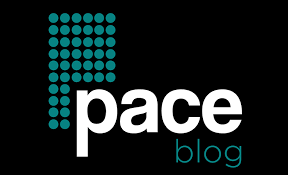In today’s fast-paced business environment, organizations are constantly striving to stay ahead of their competition and achieve their strategic objectives. To accomplish this, companies often undertake multiple projects simultaneously, each with its own set of goals and deliverables. However, managing these projects efficiently and effectively can be a complex task that requires careful coordination and resource allocation. This is where project portfolio management (PPM) comes into play.
Project portfolio management refers to the systematic process of selecting, prioritizing, and controlling an organization’s projects in order to maximize their overall value and alignment with the company’s strategic goals. By taking a holistic approach to project management, PPM enables businesses to gain a clear understanding of how individual projects contribute to the organization as a whole.
Why project portfolio management is important
Project portfolio management (PPM) is crucial for organizations as it provides an effective framework for aligning project objectives with strategic business goals. By implementing PPM, companies can prioritize and select the most valuable projects that will contribute to their overall success. This ensures that resources, including time, money, and manpower, are allocated efficiently and effectively.
One of the key benefits of PPM is improved decision-making. Through a structured approach to project selection and prioritization, organizations can make informed decisions based on data and analysis rather than relying on subjective opinions or limited information. This leads to better allocation of resources and reduces the risk of investing in projects with low potential returns.
Another advantage of PPM is enhanced visibility into the organization’s project portfolio. By consolidating all projects into a centralized system or dashboard, stakeholders gain a comprehensive view of ongoing initiatives, their status, and resource utilization. This enables better monitoring and control over projects, allowing teams to identify issues early on and take corrective actions promptly.
Overall, project portfolio management empowers organizations to maximize their return on investment by selecting the right projects aligned with their strategic priorities while ensuring optimal resource allocation and improved decision-making processes.

Streamlined project selection process
One of the key benefits of project portfolio management is a streamlined project selection process. By implementing an effective project portfolio management system, organizations can ensure that projects align with their strategic objectives and deliver the maximum value. This is achieved by evaluating each potential project based on its feasibility, return on investment, resource availability, and alignment with organizational goals.
A streamlined project selection process helps in prioritizing projects effectively. It allows organizations to evaluate and compare different projects based on their potential benefits, risks, and costs. This enables decision-makers to make informed choices about which projects to pursue and which ones to postpone or cancel. By selecting the right projects for execution, organizations can allocate resources more efficiently and minimize waste.
Moreover, a streamlined project selection process improves transparency and accountability within an organization. It provides a clear framework for evaluating proposals and ensures that decisions are made based on objective criteria rather than personal biases or preferences. This helps in creating an environment of fairness and equal opportunity for all stakeholders involved in the project selection process. Additionally, it promotes better communication between decision-makers, sponsors, and teams by providing a structured approach for discussing and justifying project choices.
In conclusion, implementing a streamlined project selection process through effective project portfolio management brings several benefits to organizations including improved alignment with strategic objectives, efficient resource allocation, better decision-making processes, increased transparency, accountability,and enhanced communication among stakeholders.
Resource optimization and allocation
One of the main benefits of project portfolio management is resource optimization and allocation. By effectively managing the resources available, organizations can ensure that they are being used in the most efficient way possible. This means identifying key resources, such as time, money, and manpower, and allocating them to projects based on their priority and importance.
Resource optimization also helps to prevent overallocation or underutilization of resources. With project portfolio management, organizations can easily identify any gaps or bottlenecks in resource availability and take necessary actions to address them. This ensures that each project has the necessary resources it needs to be successful without putting excessive strain on the organization.
Furthermore, effective resource allocation through project portfolio management allows for better decision-making. Organizations can evaluate different projects based on their potential return on investment (ROI) and allocate resources accordingly. This helps in making informed decisions about which projects should be prioritized and which ones may need to be deprioritized or postponed until more resources become available. Overall, resource optimization and allocation play a crucial role in maximizing productivity and achieving organizational goals efficiently through project portfolio management.

Improved decision-making and risk management
Improved decision-making and risk management are two key benefits of implementing project portfolio management (PPM) in an organization. PPM allows businesses to have a holistic view of all their projects, enabling them to make informed decisions about resource allocation, prioritization, and investment. By having a clear understanding of the entire project portfolio, organizations can identify potential risks and take appropriate measures to mitigate them.
PPM also facilitates better risk management by providing a framework for evaluating and monitoring risks across multiple projects. With PPM, organizations can identify potential risks early on and develop strategies to minimize their impact. This proactive approach reduces the likelihood of unforeseen issues arising during project execution.
Furthermore, PPM enables organizations to align projects with strategic objectives and ensure that each project contributes towards achieving overall business goals. This alignment helps decision-makers evaluate which projects should be pursued or discontinued based on their potential value and risk profile. Ultimately, improved decision-making through PPM leads to more efficient resource utilization, reduced costs, increased profitability, and ultimately greater success in achieving organizational objectives.
Enhanced visibility and transparency
Enhanced visibility and transparency are key benefits of project portfolio management (PPM). With PPM, organizations can gain a comprehensive view of all their projects in one place. This increased visibility allows stakeholders and decision-makers to quickly assess the status, progress, and performance of each project. By having real-time access to relevant data and metrics, they can make more informed decisions regarding resource allocation, prioritization, risk mitigation, and strategic planning.
Furthermore, enhanced visibility through PPM ensures that everyone involved in a project has access to the same information. This promotes transparency and fosters collaboration among team members. When all stakeholders have a clear understanding of the project’s goals, objectives, timelines, and dependencies, it becomes easier to align efforts towards achieving successful outcomes. Open communication channels facilitated by PPM tools enable teams to address issues promptly and proactively adapt their strategies if necessary.
Overall, enhanced visibility and transparency provided by PPM contribute to improved accountability within an organization. Clear insights into project performance allow for better tracking of milestones and deliverables against set targets. Additionally, increased transparency helps build trust among stakeholders as they can observe how resources are being utilized across projects. By promoting a culture of openness and shared information through PPM practices, organizations can streamline their operations while ensuring effective utilization of resources towards successful project delivery.

Increased collaboration and coordination among teams
Increased collaboration and coordination among teams is a key benefit of project portfolio management (PPM). PPM allows organizations to centralize their project information, making it easily accessible to all stakeholders. This enables teams to share resources, best practices, and lessons learned more effectively. With improved visibility into ongoing projects and their dependencies, teams can collaborate more seamlessly and align their efforts towards common goals.
Furthermore, PPM provides a platform for cross-functional collaboration within an organization. By breaking down silos between departments or business units, PPM fosters better communication and cooperation among teams working on different projects. This not only facilitates the exchange of knowledge and expertise but also helps identify potential synergies that can lead to innovative solutions or cost savings.
In addition, enhanced collaboration and coordination through PPM can result in increased efficiency and productivity. Teams can avoid duplicating work by leveraging existing assets or building upon each other’s progress. Moreover, with clear project priorities established through portfolio management, teams can allocate resources effectively and ensure that efforts are focused on high-priority initiatives. Ultimately, this leads to faster project delivery times and improved overall performance for the organization.
Conclusion: The advantages of implementing project portfolio management
In conclusion, implementing project portfolio management (PPM) can bring numerous advantages to an organization. Firstly, PPM allows for better resource allocation and prioritization. By centralizing all projects into a single portfolio, decision-makers can have a clear overview of the available resources and allocate them effectively based on project priorities and strategic goals.
Secondly, PPM enhances risk management capabilities. With a comprehensive view of all projects in the portfolio, potential risks can be identified early on and appropriate mitigation strategies put in place. This proactive approach to risk management helps reduce the likelihood of project failures or delays.
Lastly, PPM promotes alignment with organizational objectives. Through regular monitoring and evaluation of each project’s progress against strategic goals, adjustments can be made promptly to ensure that all efforts are contributing towards the overall success of the organization.
Overall, by adopting project portfolio management practices, organizations can optimize resource allocation, mitigate risks effectively, and align their projects with strategic objectives for improved overall performance.

